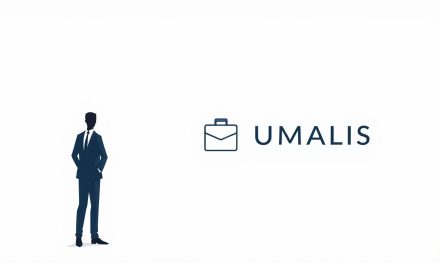We know the shift to remote work changed how you plan your day. One morning, a consultant named Marie found herself juggling calls between clients and family at the kitchen table. She felt efficient, then suddenly drained by midafternoon.
That moment forced her to redesign her space and schedule. She set a small office corner, blocked focus time, and used clear signals to separate work and life. Within weeks, her energy and output improved.
Today, many independent professionals face similar challenges: fewer commutes but more isolation. Data shows many workers feel disconnected after the pandemic. We offer a practical framework so you can structure reliable routines and protect both productivity and mental health every day.
Throughout this guide, we combine reassurance with concrete methods: dedicated spaces, 90-minute focus cycles, and simple status cues. You’ll get systems that translate goals into tasks and help you switch off on time. For context on workplace conditions and wellbeing, see working conditions and wellbeing.
Table of Contents
Key Takeaways
- Create a dedicated office zone and short rituals to start work.
- Use structured time blocks and 90-minute focus cycles for better productivity.
- Protect mental health with status signals and clear end-of-day steps.
- Balance autonomy with discipline to deliver consistent results.
- Adopt simple tools and routines that fit how you actually work.
Remote work today: why structure matters for productivity and mental health
The shift to distributed teams reshaped daily routines and exposed gaps in how tasks and signals flow.
Today, working remotely is common across information, finance/insurance, and professional services. Yet data shows 73% of remote workers feel isolated and 52% feel less connected since the shift. Lack of clear communication is the top complaint: 46% of employees cite it as their biggest challenge.
These trends create practical problems: longer response times, ad-hoc meetings, and fewer informal touchpoints. That increases cognitive load and harms mental health and performance over time.
The present state and common challenges
- Ad-hoc meetings and unclear expectations fragment deep focus.
- Fewer spontaneous check-ins make alignment harder for the team.
- Some professionals report feeling more overworked; 27% of marketers note increased load.
How structure reduces risk and restores balance
Codifying meeting rules, response windows, and documentation standards lowers friction. Make sure briefs, deadlines, and deliverables are explicit so independent pros can replace in-person cues.
| Issue | Impact | Practical fix | Metric to track |
|---|---|---|---|
| Isolation | Lower engagement | Weekly check-ins + async updates | Participation rate |
| Ad-hoc meetings | Lost deep focus | Schedule response windows and meeting rules | Time in meetings / week |
| Unclear deliverables | Missed deadlines | Standard brief templates and shared trackers | Turnaround time |
| Energy dips | Reduced output | Protect deep work blocks in weekly schedule | Output vs. time |
Structure supports both work and life. Predictable hours, clear status, and concise async communication protect peak time and preserve energy for rest and exercise.
Design a focused home office that makes work feel effortless
A defined workspace signals your brain to focus and creates clear boundaries between professional and personal life. A few practical choices make long sessions more comfortable and sustainable.
Dedicated workspace, lighting, and ergonomic choices
Create a dedicated zone that reads “on duty.” Use an ergonomic chair, set desk height correctly, and add a small standing mat or footrest to ease fatigue.
Use natural or focal lighting and position screens to avoid glare. These changes reduce eye strain and boost productivity during deep blocks.
Noise reduction: doors, white noise, and noise‑canceling headphones
Close doors during focus sessions to cut household distractions. Add a white-noise machine, fan, or humidifier to mask intermittent sounds.
For heavy ambient noise, choose reputable ANC headphones like Bose or Sony to stabilise your soundscape for calls and concentration.
Fast, reliable internet and backup options
Make sure your connection is stable. Keep a phone tethering plan or secondary connection ready for critical meetings to avoid drop-offs.
| Need | Solution | Benefit |
|---|---|---|
| Ergonomics | Adjustable chair + desk height | Better posture, less fatigue |
| Noise control | Close doors + white noise + ANC headphones | Fewer interruptions, steadier focus |
| Connectivity | Main ISP + phone tethering backup | Reliable calls and deadlines met |
| Clutter | Limit tools on desk, cable management | Faster task switching, less friction |
Build a morning routine that kickstarts your day
Small, repeatable actions at the start of the day set the tone for concentrated, purposeful work. Begin with a simple « commute »: get dressed, shower or make coffee, or take a brisk 10-minute walk to signal the shift in your mind.
Simple commute rituals
These rituals help feel grounded and reduce procrastination. Choose two or three reliable steps you can do every day. Bundle water, a short stretch, and deep breaths into the first 15 minutes to stabilise energy.
Eat the frog: prioritise high-impact tasks
Schedule your top task in your best energy window and protect the first 60–90 minutes from meetings. Tackle the hardest or most important task early so the rest of your schedule becomes easier.
« A compact morning sequence creates momentum so high-priority tasks get done early. »
Use a five-minute planning block to confirm what matters most. If your peak is later, front-load warm-up tasks and shift core tasks to your biological high. For practical balance, see our guide on balancing work and personal life.
Set clear working hours and a sustainable work schedule
Establishing fixed hours gives your day a reliable spine and reduces decision fatigue. Choose the hours when your energy is highest and make them non-negotiable for core tasks.
Define start and stop times and publish them to your team and key clients. Put your work schedule in a shared calendar so members know when to expect replies.
Define start-stop times and communicate availability to your team
Share clear working hours and enforce hard stops. If you flex for family or errands, update your status and calendar notes so coordination stays smooth.
Use status indicators and time blocking to protect focus time
- Time-block deep work and label those slots as Do Not Disturb.
- Batch communication twice daily to reduce context switching.
- Use recurring blocks (reporting, invoicing) to lower planning overhead.
« Protecting hours preserves recovery and ensures consistent delivery. »
Reassess your schedule quarterly and optimize for outcomes, energy, and client satisfaction. Make sure to keep a small buffer at day end to wrap loose ends without cutting into personal time.
Goals, to‑do lists, and task systems that drive results
Anchor your schedule to one to three non‑negotiable priorities every workday. Start by writing a compact to-do list that highlights must‑do items. This reduces decision fatigue and keeps progress steady.
Translate weekly goals into daily tasks and small subtasks. Use a single capture point for new ideas and triage it each morning. Note a clear « next day » starter task before you close to speed tomorrow’s ramp‑up.
Simple systems that stick
Choose a lightweight method and use it consistently: kanban board, bullet journal, or a minimal project app. Pair that system with a time tracker — Harvest, RescueTime, or Toggl — to see where your time goes and where your peak energy lies.
« Keep systems minimal; the goal is progress, not tool overhead. »
- Make sure each task has a clear definition of done and a realistic estimate.
- Batch similar tasks to cut context switching and boost productivity.
- Schedule a weekly review to set the next week’s priorities.
| Practice | Tool | Benefit |
|---|---|---|
| Daily priorities (1–3) | Paper or app | Focus on outcomes |
| Visual workflow | Kanban board | Clear status, less friction |
| Time analysis | Harvest / Toggl / RescueTime | Align schedule with energy |
| End‑of‑day prep | Single inbox | Faster next‑day start |
Make breaks non‑negotiable to maintain peak performance
Small, deliberate breaks can be the difference between an effective and exhausting day. Build short pauses into your calendar so rest becomes a professional habit rather than a reward.
90‑minute focus cycles with 5‑10 minute micro‑breaks
Use 90‑minute focus blocks followed by 5–10 minute micro‑breaks to reset attention and sustain quality through the workday. Set a timer and treat the pause as scheduled time — not optional.
Light movement and walking calls to refresh body and mind
Stand, stretch, or take a short walk to ease stiffness and boost oxygen flow. Gentle exertion improves cognition and helps you return to tasks with clearer focus.
- Try walking calls or camera‑off standups when appropriate; subtle activity can help feel more alert.
- Hydrate during breaks and look at distant points to reduce screen strain and support long‑run productivity.
- Keep simple props nearby — a resistance band or balance pad — to layer in movement quickly.
- If you skip pauses, use timers or the Pomodoro technique to enforce cadence every day.
« Rest is a tool, not a treat; structured recovery is how professionals stay reliable over life’s demands. »
Track energy patterns for a week and schedule heavier tasks before natural dips. Avoid deep social media during pauses; choose brief resets that help you return focused and ready to produce.
Digital hygiene: minimize distractions and close open loops
A tidy digital workspace frees your attention for the tasks that matter most. Treat your screen like your office: fewer open items means fewer chances to drift. This section shows practical steps you can adopt in a working home setup.
Declutter files, inboxes, and tabs
Start with a clean digital desk. Archive old files, organise folders, and keep only active items on your desktop. Unsubscribe from recurring newsletters and use tools such as Clean Email to batch-clean lists.
Close tabs and quit apps that are not in use. Passive clutter taxes attention and steals time.
Blockers, notifications, and focused rhythms
Install website-blocker plugins on Chrome or Firefox and set schedules for focus windows. Make sure chat and mail notifications are off during deep work; allow only critical alerts.
Keep a single to-do list capture. If a thought appears, park it there and return to the task at hand.
- Batch email twice daily and schedule short admin sprints.
- Use full-screen modes for writing or design to limit visual distraction.
- Do a weekly digital reset: clear downloads, archive completed projects, and back up essentials.
These small adjustments reduce distractions and save you time. For independent professionals in France, treating the digital space like your office preserves energy and raises overall productivity.
Social media without the time sink

Notifications often hijack your attention and fragment the best parts of your day.
The average employee spends about 12% of working hours on social media. That scrolling can lead to emotional exhaustion and reduce focus over time.
Turn off notifications and set intentional check‑in windows
Turn off social app notifications on desktop and phone during core work blocks to prevent reflexive checking. Sign out of accounts and remove browser shortcuts to create a small friction barrier.
Set two short windows for intentional check-ins. Outside those windows, keep apps closed so you protect your time and your mind.
- Review weekly screen‑time reports; data helps workers recalibrate habits.
- If social media is part of your job, batch those tasks with a checklist to avoid aimless scrolling.
- Replace scrolling with a micro‑walk, water break, or quick stretch to support work-life balance.
- Use grayscale or focus filters to reduce the apps’ pull and make intentional use easier.
« Treat social like a tool you control—use it with intention, not impulse. »
Communication that works: async first, meetings when it matters
Clear communication plans stop small delays from growing into missed deadlines. Define how your team shares updates, which channels to use, and when a live call is truly needed.
Set communication guidelines: channels, response times, and detail
Lead with async. Use chat or shared docs for questions that do not demand real-time answers. Reserve live meetings for decisions, blockers, or alignment that cannot wait.
- Define channels by purpose: requests, updates, brainstorming.
- Set response-time expectations for the team (e.g., 24h for non-urgent items).
- Keep a visible comms playbook and update it quarterly.
Plan for time zones with clear deadlines, links, and screenshots
When members are across zones, send detailed async messages with deadlines, relevant links, and screenshots. This reduces back-and-forth and speeds delivery.
Where overlap exists, schedule the narrowest shared window for live decisions and keep routine updates async.
Record meetings and share notes so everyone stays aligned
Record important calls, attach slides, and publish concise notes with owners and due dates.
« Use agendas with outcomes; end each meeting with owners, dates, and next steps. »
| Need | Async solution | When to meet | Metric |
|---|---|---|---|
| Updates | Shared doc + summary message | No meeting; async summary | Meeting load / month |
| Decisions | Prep doc + pros/cons | Short decision meeting | Decision turnaround |
| Onboarding / training | Recorded sessions + notes | Optional Q&A slot | New member ramp time |
| Cross-zone coordination | Clear deadlines + screenshots | Overlap core hours | Response time |
Collaborate like a pro with the right remote work tools
Choose a clear toolset so your days run with fewer interruptions and missed handoffs. A unified platform for chat, calls, and project tracking makes coordination simple for every member of the team.
Unified platforms for chat, video calls, and project tracking
Consolidate client comms, files, and tasks into shared spaces so everyone sees the same source of truth. Standardize folder names, board statuses, and naming conventions to ease onboarding and scaling.
Time trackers and focus music for measurable productivity
Use time trackers such as Harvest, RescueTime, or Toggl to reveal productive windows. Then schedule heavy tasks in those slots and protect them from meetings.
Pair deep work with instrumental or designed focus music from Focus@Will or Brain.fm to reduce cognitive fatigue and sustain attention.
« A lean, agreed toolset reduces friction and keeps tasks flowing across the whole office. »
- Sync calendars and task boards to avoid conflicts.
- Turn on meeting recordings and keep a searchable archive.
- Automate reminders and handoff alerts to prevent missed work.
- Review and cut redundant tools quarterly.
| Need | Recommended tools | Benefit |
|---|---|---|
| Chat + calls | Teams / Slack + integrated phone | Faster decisions, fewer app switches |
| Time tracking | Harvest / Toggl / RescueTime | Data-driven scheduling, improved productivity |
| Focus aids | Focus@Will / Brain.fm | Longer deep work periods, less fatigue |
| Project tracking | Asana / Trello / Jira | Clear owner, dates, and progress |
Secure your home office and protect company data
Protecting your equipment and data should be as routine as setting your schedule each day. Security keeps your work reliable and your clients’ trust intact. We outline simple actions independent professionals can apply now.
VPN, Wi‑Fi hygiene, and device policies
Use a business‑grade VPN on all work devices to encrypt traffic, especially on public or shared networks. This step prevents easy interception of sensitive files and communications.
Make sure your router uses a strong password, updated firmware, and non-default admin credentials. Separate guest networks for personal use and restrict admin rights on work machines.
Authenticate, patch, and verify
Enable multi‑factor authentication for critical accounts; it’s a high‑impact, low‑effort defence. Keep operating systems, browsers, and approved tools patched and set updates to run outside core working hours.
- Separate personal and work devices when possible and limit admin access.
- Adopt a “trust but verify” mindset: inspect attachments and links and confirm senders before opening.
- Lock screens when you step away and store equipment out of sight after the working day.
Reporting, backups, and routine checks
Know how to contact IT and report phishing or incidents promptly. Fast reporting limits damage and protects other workers.
Back up key files per company policy and test restores periodically. Document a short home office security checklist and review it monthly so protections stay current.
« Small, consistent security habits protect your job, your clients, and your daily rhythm. »
Set boundaries at home: family, chores, and personal devices

Clear household boundaries let you protect focused hours and stay present when the day ends. Communicate a simple, visible schedule so everyone knows when you are on and when you are off.
Communicate your work hours and “do not disturb” signals
Share your schedule with household members and post a visible Do Not Disturb signal during calls or focus blocks. Agree that non-urgent chores wait until breaks or after core hours.
Separate work and personal devices to reduce context switching
Use distinct devices or separate profiles for professional apps and social accounts. This reduces temptation and speeds task recovery when interruptions occur.
- Coordinate care and logistics with partners and roommates via a shared calendar.
- Set an interruption policy (knock only for urgent matters) so expectations are clear.
- Plan family time deliberately; being fully present outside work protects mental health.
« Protect weekends and review boundaries weekly so the system adapts as life changes. »
These simple rules improve your work-life balance and give you a reliable way to manage focus, obligations, and rest.
Fuel your brain: sleep, hydration, and healthy snacks
Good sleep, steady hydration, and smart snacks form the unseen framework for a productive day. Adults should aim for seven or more hours nightly; a consistent sleep-wake window stabilizes energy and supports mental health.
Start the morning with a glass of water and keep a bottle at your desk. Mild dehydration harms focus and slows thinking, costing valuable time during peak hours.
Employees with unhealthy diets are 66% more likely to suffer productivity loss than those who eat whole foods. Stock ready-to-eat options — nuts, fruit, Greek yogurt — to help feel satiated without energy crashes.
- Prioritize 7+ hours of sleep; keep the window steady for better cognitive performance.
- Plan balanced lunches at home to avoid grazing that steals focus.
- Limit heavy midday meals before deep work blocks and reduce late caffeine; swap to herbal tea.
- Use short stretches or breathing when you hit a lull and schedule exercise like a meeting.
« Treat health habits as core tools in your professional toolkit, not extras. »
Small, consistent choices shape your work rhythm and improve overall productivity every day. We recommend treating these habits as part of your daily routine so they reliably help you perform and enjoy life.
End the day right: shutdown routines and next‑day planning
A clear end‑of‑day ritual helps you close obligations and protect the next morning’s momentum. Use a short, repeatable routine that signals the end of your working hours and reduces evening rumination.
Tidy your desk, close apps, and write the first task
Tidy the office surface and stash loose papers. Close apps and browser tabs so nothing bleeds into your personal time.
Write a compact to-do list for the next day and pick the first task. That one note speeds your morning start and saves decision time.
Unplug evenings and protect recovery
Set a visual cue—lamp off or door closed—to mark the end day boundary. Avoid late-night email checks and reserve urgent exceptions for a defined window.
Unplug during evenings and weekends to restore creativity and sound judgment. Small, consistent pauses make your work sustainable every day.
« A short shutdown routine is small in cost and large in return: clearer mornings, better sleep, and steadier output. »
| Action | Why it matters | Quick check |
|---|---|---|
| Tidy workspace | Reduces visual friction for next day | Desk cleared, cables managed |
| Close apps | Prevents stray notifications at night | All work apps closed |
| Plan next day | Preserves morning momentum | 1st task on to-do list |
| Unplug | Protects recovery and focus | Notifications off, true downtime |
Reflect weekly on what worked in your schedule and adjust. For ideas on keeping balance and boundaries, see our guide to work-life balance.
Beyond employment: explore freelancing as a remote path
For skilled writers, designers, and developers, remote freelancing has become a mainstream career option. Demand for independent projects is high, and platforms like Upwork and Fiverr make it simple to find initial work and prove your value.
You control your work schedule, choose projects, and scale your hours toward income goals. To avoid burnout, set clear boundaries, baselines for rates, and protected admin time.
Pros, platforms, and sustainable rates
- Clarify services and clients: define deliverables to shorten sales cycles and protect margins.
- Validate demand: use Upwork or Fiverr to test offers and build early proof quickly.
- Set baseline rates: calculate target income, realistic hours, and price by value, not just time.
- Protect your schedule: reserve buffer time for admin, marketing, and revisions to avoid scope creep.
- Sustain a cadence: start with manageable hours and diversify across a few clients to stabilise income.
Build a short onboarding flow—brief, timeline, and payment terms—so projects run predictably. Create case studies that show how you solve business problems, and review your service mix quarterly to double down on profitable work.
For a practical guide to independent opportunities, see our page on freelancing opportunities.
Conclusion
Small changes in routines and tools can turn scattered days into steady, reliable progress when you are working remotely.
Working home well means combining a calm workspace, clear hours, and simple rituals that last. Build your work home ecosystem deliberately: a focused corner, dependable tools, and firm boundaries make each minute count.
Make sure your communication norms and async habits keep the team aligned without filling calendars. Treat rest and breaks as professional assets; they make you feel resilient and sustain productivity and life balance.
Use a short morning routine and an end‑of‑day reset to bookend focus and recovery. Start small, measure energy and output, iterate weekly, and apply these home tips selectively so the system fits you — not the other way around.
FAQ
How do I create a reliable work schedule that supports productivity and mental health?
Start by defining clear start and stop times each day, then communicate those hours to colleagues and family. Use time blocking to reserve focus periods and status indicators (calendar, Slack, Teams) to signal availability. Build short routines around the start and end of the day to mark transitions and protect downtime for mental recovery.
What are the essentials for designing an ergonomic and focused home office?
Choose a dedicated workspace with good natural or adjustable lighting, an ergonomic chair and desk at the correct height, and cable/desk organization to reduce visual clutter. Add noise control—closed door, soft furnishings, or noise‑canceling headphones—and ensure fast, reliable internet with a backup (mobile hotspot or secondary ISP) for critical calls.
How can I structure my morning to kickstart deep work?
Adopt a short “commute” ritual: get dressed for work, have a coffee or hydration, and take a 5–15 minute walk. Schedule your highest‑priority task during your peak energy window—an “eat the frog” approach—and reserve lighter administrative tasks for lower‑energy times.
What task systems help independent professionals stay on track?
Limit daily priorities to 1–3 must‑win tasks and track weekly goals. Use a simple Kanban board, a bullet journal, or a project management app like Asana, Trello, or Notion to visualize progress. Combine daily to‑dos with weekly reviews to close open loops and adjust priorities.
How often should I take breaks to maintain focus without losing momentum?
Use focus cycles of roughly 90 minutes followed by 5–10 minute micro‑breaks. Take a longer break every 3–4 cycles for movement or a walk. Short, regular breaks reset attention and reduce cognitive fatigue, improving sustained performance.
What digital hygiene practices reduce distractions during focused work?
Declutter your desktop, close unused tabs, and set email and chat to scheduled check times. Use website blockers and customize app notifications to allow only essential alerts during focus blocks. Keep a short note or app for quick tasks so you can return to your primary work without losing ideas.
How do I prevent social media from becoming a time sink while working remotely?
Turn off nonessential notifications and create fixed social check‑in windows. Consider platform timers or browser extensions to limit use, and move apps off your primary device or workspace to reduce temptation during focus periods.
When should I choose async communication versus a meeting?
Favor asynchronous updates for status, decisions, and information sharing—use clear channels, deadlines, and attachments. Reserve meetings for complex problem solving, alignment across stakeholders, or sensitive conversations. Always share an agenda, meeting link, and notes to keep meetings efficient and inclusive across time zones.
What remote collaboration tools are most effective for independent professionals?
Use a unified platform for chat and file sharing (Slack, Microsoft Teams), a reliable video tool for calls (Zoom, Google Meet), and a project tracker (Asana, Trello, Notion). Add time trackers or focus music apps when needed to measure effort and protect concentration.
How can I secure my workspace and protect company data?
Use a company‑approved VPN, strong Wi‑Fi passwords, and device encryption. Follow security policies for software updates and threat reporting. Keep personal and work devices separate and use multi‑factor authentication on critical accounts to reduce risk.
How do I set boundaries with family and roommates to avoid interruptions?
Communicate your working hours and post a visible “do not disturb” signal when you need focus time. Establish agreed quiet times and chore routines. If possible, designate a separate workspace and use headphones as a simple boundary cue.
What small habits support energy and cognitive performance during the day?
Prioritize sleep, regular hydration, and nutrient‑dense snacks. Schedule light movement breaks and short walks to refresh body and mind. Keep a consistent daily rhythm to support sustained concentration and emotional balance.
How should I end the workday to preserve work‑life balance?
Follow a short shutdown routine: tidy your workspace, close apps, and write tomorrow’s top 1–3 tasks. Physically leave the workspace if possible and schedule evening or weekend unplug time to recharge and maintain clear boundaries.
What are practical steps to begin freelancing without burning out?
Start by testing platforms like Upwork, Fiverr, or specialized marketplaces for your skillset while keeping a client pipeline. Set clear rates, scoped contracts, and realistic delivery timelines. Build a routine that includes client communication windows, focus blocks, and nonworking recovery time to prevent overload.





